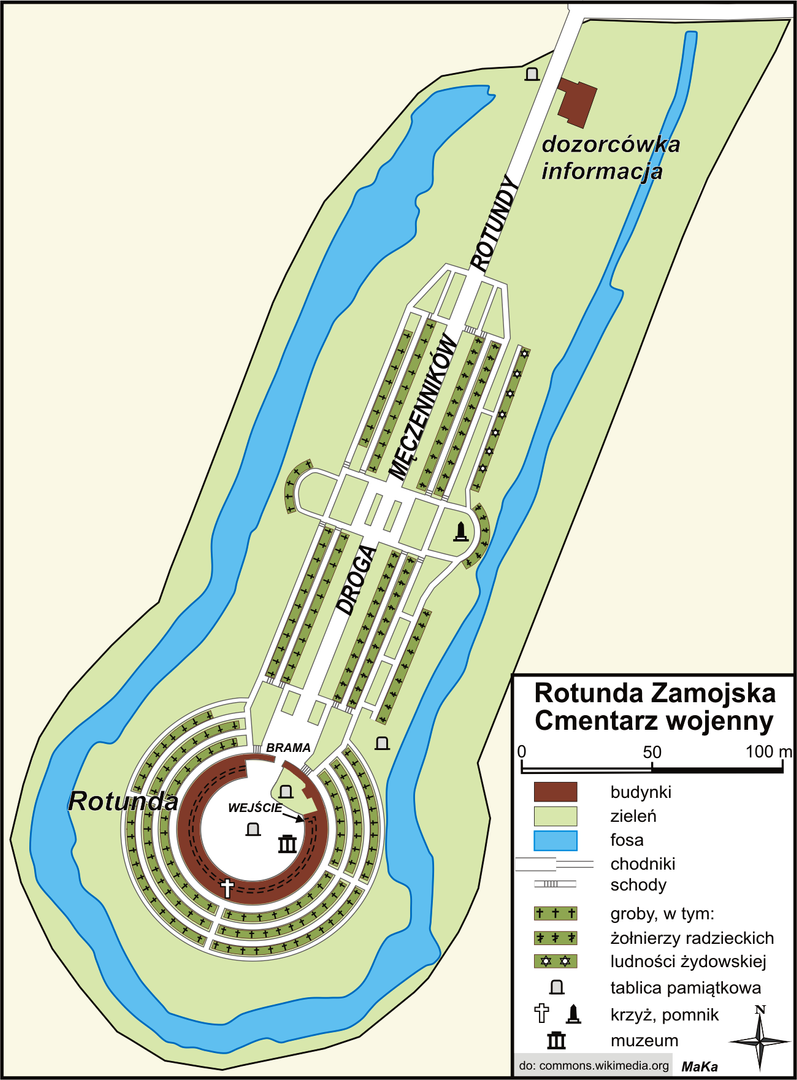Zamość Rotunda
7.3

Overview
The Zamość Rotunda is one of the most significant historical and cultural sites in Zamość. It was built between 1825 and 1831 as a fortified artillery battery under the direction of French General Jean-Baptiste Mallet de Mallet. Located approximately 500 meters south of the Old Town, it served a defensive purpose, characterized by its thick (about 7 meters) brick-and-stone walls and a courtyard with a diameter of 38.5 meters.
During World War II, from 1940 to 1944, the Rotunda was used by the Germans as a transit camp where individuals arrested as part of Operation AB were detained, including intellectuals and members of the resistance movement. Mass executions took place on the grounds, with an estimated 8,000 victims. After the war, a cemetery with symbolic graves of the Rotunda's victims was established, along with the Museum of Martyrdom of the Zamość Region.
The site commemorates tragic events and the struggle for Poland. The ashes of over 45,000 victims, including soldiers of the Home Army and others who fought for freedom, are interred here. Regular memorial ceremonies are held at the Rotunda, and the documentary film *Zamość Rotunda – The Death Cell* explores the activities of the Home Army and the Zamość Uprising.
The architectural charm of the Rotunda and its dramatic history make it a memorial site that has become permanently etched into the history of Zamość.
Location
Tickets
Powered by GetYourGuide
2025 Wizytor | All Rights Reserved